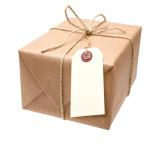
You may have to send parcels to Russia for private or business purposes. In either case your parcels may get lost or simply get stuck at a depot of the Russian postal service (the Russian Post).
In order to track your registered parcel at any step of delivery, the Russian Post offers a useful tool called “Track and trace postal item” in English or the same service in Russian.
All you need to do in order to track an international or an EMS shipment sent to Russia is to enter your parcel code which is found on your receipt and which consists of 4 letters and 9 digits (without any brackets or spaces) and click the “Search” button.
Additionally, your parcel may be seized if it contains any prohibited items.
Items prohibited to be posted to Russia:
1) Printed and audio-visual materials which:
- Promote or appeal to extremist and terrorist activities or contain any justification of terrorism,
- Contain pornographic materials,
- violate the laws of the Eurasian Economic Community on elections,
- promote or aim to promote Nazi merchandising or symbols or merchandising and symbolism which are similar to Nazi merchandising or symbolism,
- contain any other information which may pose a threat to the political and economic interests of the Russian Federation, its national security or health and morality of its citizens;
2) All kinds of firearms (or parts thereof), ammunition for any firearms (or parts thereof);
3) Hazardous wastes;
4) Special technical devices intended for secret collection of information;
5) Poisonous substances which are not precursors of narcotic or psychotropic substances;
6) Narcotic and psychotropic substances and their precursors, including those in a form of a medication;
7) Human organs and (or) tissues, blood and its components;
8) Any type of plants in any condition, including plant seeds;
9) Live animals, excluding bees, leeches and silkworms;
10) Ozone depleting substances;
11) Plant-protecting agents falling within Appendixes A and B of the Stockholm Convention on Persistent Organic Pollutants of May 22, 2001;
12) Tools used to catch aquatic biological resources:
- ready nodular fishing nets, hand or machine made of synthetic nylon or other mono-fiber threads with threads of less than 0.5 millimeters in diameter, with the mesh size of less than 100 millimeters (mesh design pitch size less than 50 millimeters);
- ready nodular fishing nets hand or machine made of other mono-fiber threads with threads of less than 0.5 millimeters in diameter, with the mesh size of less than 100 millimeters (mesh design pitch size less than 50 millimeters);
- electrical fishing systems and devices, consisting of electric signal generators with connected electric conductors and accumulators (batteries), which simultaneously perform the function of procurement (catching) of aquatic biological resources by using electricity);
13) Alcoholic products, ethylene alcohol or beer;
14) Any types of tobacco goods and smoking mixtures;
15) Radioactive materials;
16) Cultural heritage items and treasures;
17) Perishable goods;
18) Precious stones (gems) of any kind and in any condition or natural diamonds, except jewelry items;
19) Explosive items and materials.





